About Us
The Advanced Materials Synthesis Group (AdMat Group) focuses on obtaining materials with a wide range of applications, covering both inorganic and organic compounds. The studied materials demonstrate a number of designed properties, including luminescent, thermochromic, thermal, mechanical, electrical, optical, antibacterial, adsorptive, and sensing functionalities.
The group’s research concentrates on the synthesis of organic dyes with defined optical properties (e.g., specific absorption and emission spectral ranges) and physicochemical properties (e.g., thermal stability). They can be obtained either by modifying known structures or by synthesizing new chemical compounds. A broad range of thermochromic materials is being developed, which change color in response to temperature variations.
Such materials may be used, for example, in labels monitoring storage conditions of products, where exceeding a after exceeding a specified temperature, humidity, or storage time, a distinct color change can be observed. Other groups of compounds with thermochromic properties show potential for use as innovative hybrid temperature sensors, enabling readings based on both changes in emission spectra and visible color variations, as well as serving as overheating indicators.
The group also develops materials for characterized by various optical, thermal, and sensing properties. characterized byvarious optical,thermal, and sensing properties.This researchfocuses on obtainingnew optically. active transparentpolycrystalline ceramics, which can serve as efficient near-infrared emitters.
Another area of interest involves the functionalization of waveguide layers produced via the sol–gel method from silicon and titanium oxide precursors, as well as their structuring to obtain photonic microstructures. Research also includes polymer layers doped with dyes for Direct Laser Interference Lithography (DLIP). marking and the fabrication of periodic structures in photoresist layers using photolithography. The group also studies the development of functionalized (volume- or surface-modified) polymeric and sol–gel
colloidal crystals doped with dyes for sensing applications. These photonic crystals (opals and inverse opals) are also tested) for use in anti-counterfeiting researches technologies.To thisend, research includes the synthesis of microcapsules as well as holographically and lithographically marked layers. holograficznie i litograficznie.
Another research direction covers the synthesis and application of sequence-defined polymers. These synthetic macromolecules are expected to demonstrate enzyme-like selectivity and functionality, with applications in catalysis.
Finally, the group also conducts research on adsorption phenomena, focusing on harmful gaseous pollutants such as carbon dioxide and volatile organic compounds. Porous materials, particularly modified layered materials, are tested as adsorbents.
Group members
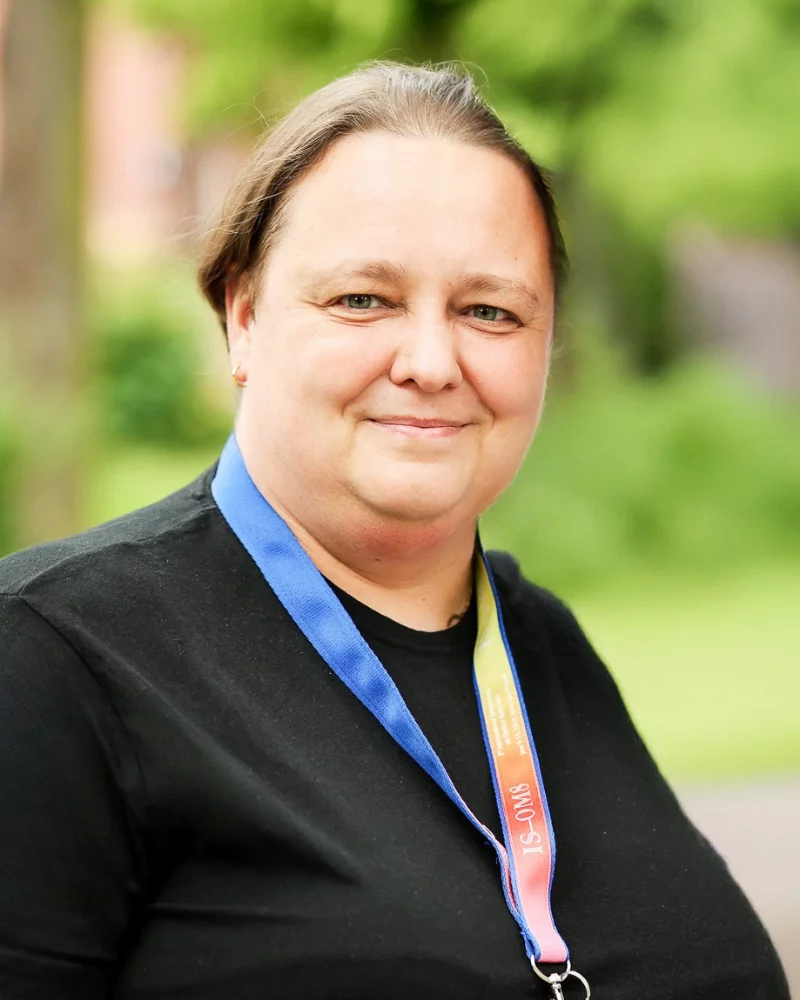
Associate Professor Joanna Cybińska, PhD
Prof. Joanna Cybińska works as Director of R&D and Leader of the Advanced Materials Synthesis Group (AdMat). Her research focuses on the synthesis and optical properties of luminescent materials, in particular inorganic compounds doped with rare-earth metal ions and functional nanomaterials.
At the beginning of her career, Prof. Cybińska gained experience at the University of Wrocław, where she obtained her PhD and then her habilitation in chemistry. During her research career, she completed numerous international fellowships at universities in Cologne, Lyon, Aveiro, and at the DESY research center in Hamburg.
She has also conducted research on the synthesis and spectroscopic characterization of nanomaterials in ionic liquids at the Universities of Cologne and Bochum. Her scientific record includes participation in numerous national and international research projects, both as a principal investigator and team member. Prof. Cybińska also served as assistant editor of Optical Materials (Elsevier) and as scientific secretary of six international conferences, in addition to chairing three ATAM conferences.
Currently, she focuses on developing modern phosphors for applications in photonics, security materials, and labeling systems, such as thermochromic inks for monitoring storage conditions of products and solutions for document personalization.
A special focus of her research is near-infrared emitting materials and nanomaterials synthesized in ionic liquids, which, thanks to their unique properties, may find applications in advanced industrial and medical technologies. She combines expertise in materials chemistry, spectroscopy, and functional technologies to tailor her solutions to the needs of modern industry and innovation.

Associate Professor Małgorzata Guzik, PhD
Prof. Małgorzata Guzik works as Head of Research. Her work focuses on the fabrication and structural/spectroscopic characterization of inorganic optical materials activated with rare-earth ions, such as nano- and micropowders, single crystals, transparent ceramics, glasses, and optical fibers. These are designed for applications as phosphors, laser materials, and scintillators.
Early in her career, Prof. Guzik specialized in inorganic chemistry, spectroscopy, and the physico-chemistry of d- and f-electron compounds, skills she developed during research stays at LPCML (now iLM) in Lyon and at the Shanghai Institute of Optics and Fine Mechanics in China. She has led five international projects (including NCN-HARMONIA and NAWA-POLONIUM) and has been a team member on seven others. She also served as editor for Optical Materials (Elsevier) and acted as co-organizer, secretary, and vice-chair of numerous international conferences, including chairing IS-OM8 (2019).
Her current research focuses on discovering new materials dedicated to advanced optical technologies. She combines her expertise with technological needs, working on the design and synthesis of luminescent and laser materials with controlled structural and optical properties.
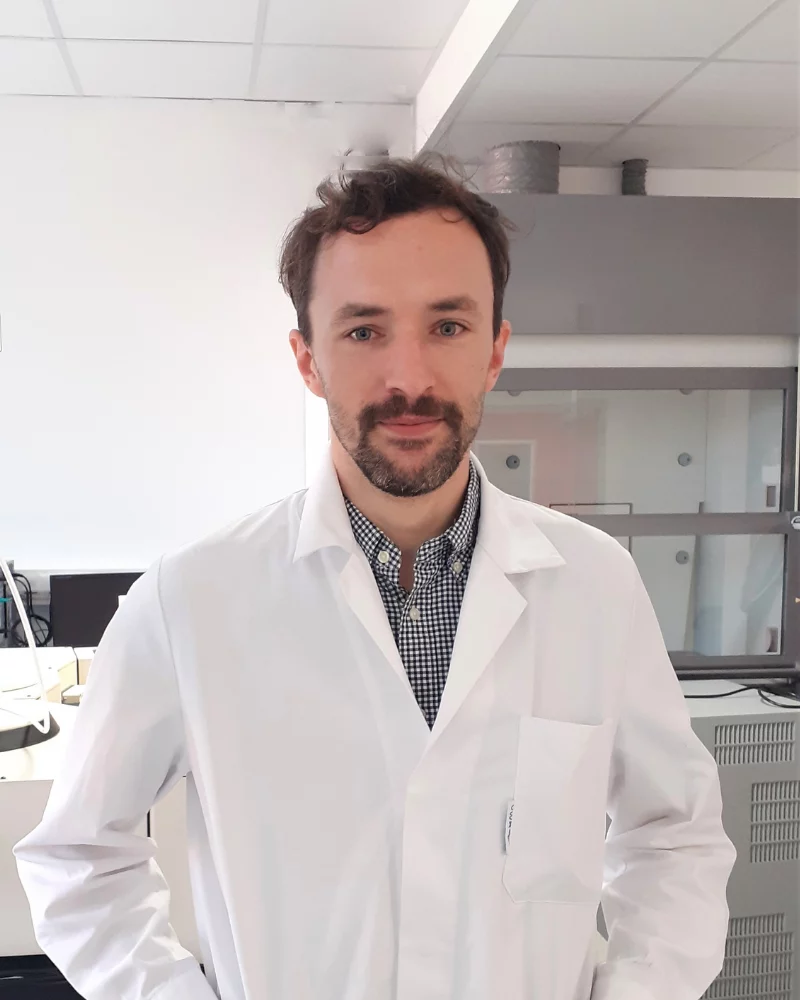
Maciej Czajkowski, PhD Eng.
Dr. Maciej Czajkowski works as a Principal Specialist. He leads the NCBiR LIDER XII project “Application of Photonic Crystals in Authenticity Security.” His research focuses on developing new anti-counterfeit materials that can be easily deposited on industrial surfaces, such as packaging, through printing.
At the beginning of his career, he studied azobenzene liquid crystals and polymers, focusing on photoinduced effects such as phase transitions and diffraction grating recording. He led a project on new liquid-crystal materials with chiral ionic compounds for use in light modulators. He has also been involved in research on luminescent dye-based and liquid-crystalline systems for white laser light emission, as well as on two-dimensional colloidal crystals for light couplers in integrated photonic systems. He contributed to the development of photoluminescent structured polymer and sol-gel waveguides and sensor layers doped with dyes. In addition, he has significant experience in the properties of dyes and pigments for laser marking in polycarbonate security documents and in producing thermochromic materials.
Currently, he focuses on functionalized colloidal crystals doped with polymeric and sol-gel dyes with sensing properties. In his work, he employs a range of spectroscopic, microscopic, and optical techniques.
He uses his expertise to design materials for photonic systems with diverse optical, thermal, and sensing properties.
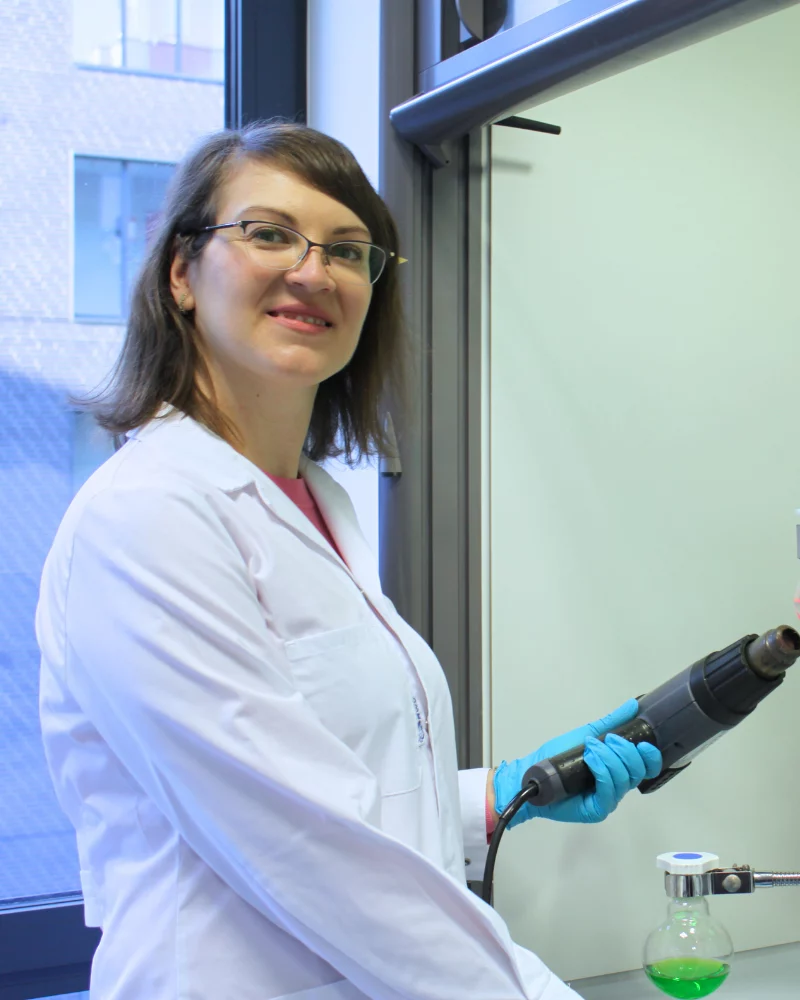
Magdalena Wilk-Kozubek, PhD Eng.
Dr. Magdalena Wilk-Kozubek works as a Principal Specialist. Her research focuses on the design, synthesis, and characterization of thermochromic materials for use in thermometers and indicators signaling when a threshold temperature has been exceeded.
Early in her career, she specialized in materials chemistry at Wrocław University of Science and Technology and during postdoctoral fellowships at Iowa State University and Stockholm University. She has participated in nine national and international research projects, four of which she led. As PI of the project “Thermochromic indicator of exit from deep freeze state” (NCBR, LIDER XI), she developed a breakthrough solution – a visual thaw indicator.
This technology is applicable in many industries, such as food, pharmaceuticals, and cold-chain logistics, where detecting a break in refrigeration is crucial. The indicator irreversibly changes color once the critical temperature is exceeded. This innovation earned her team the main prize at the 3rd edition of the Łukasiewicz Accelerator Demo Day. She has also managed commercialization activities of the technology on behalf of the Łukasiewicz Center.
Thanks to this solution, it is possible to effectively monitor the safety of temperature-sensitive products, such as deep-frozen food, pharmaceuticals, and vaccines that require strict temperature control during transport and storage. For this innovation, the team received the Grand Prize during the 3rd edition of the Łukasiewicz Accelerator Demo Day. As part of the project commissioned by the President of the Łukasiewicz Centre, PhD Eng. Wilk-Kozubek also led the activities aimed at the commercialization of the developed technology.
Currently, she focuses on developing new thermochromic materials operating in various temperature ranges. These studies are carried out in collaboration with industry to meet real market demands. She employs spectroscopic, optical, and thermal techniques for in-depth analysis and adaptation of materials for practical applications.

Anuj Sharma, PhD
Dr Anuj Sharma works as a Senior Specialist and leads the NCN POLYCAT project. His research focuses on the design, synthesis, and characterization of organic materials, including oligomers and macromolecules for advanced applications. His scientific interests encompass organic synthesis, sequence-defined polymers, asymmetric catalysis, and advanced material characterization techniques. In his work, Dr Sharma combines organic chemistry with technological applications.
At the beginning of his career, Dr Sharma gained experience in the design of fluorescent organic compounds for optoelectronics during his PhD studies at the Indian Institute of Technology Roorkee. He also developed innovative methods for controlling optoelectronic properties.
Currently, Dr Sharma focuses on the synthesis of macromolecules with precisely defined sequences, designed to mimic enzymatic catalytic functions.
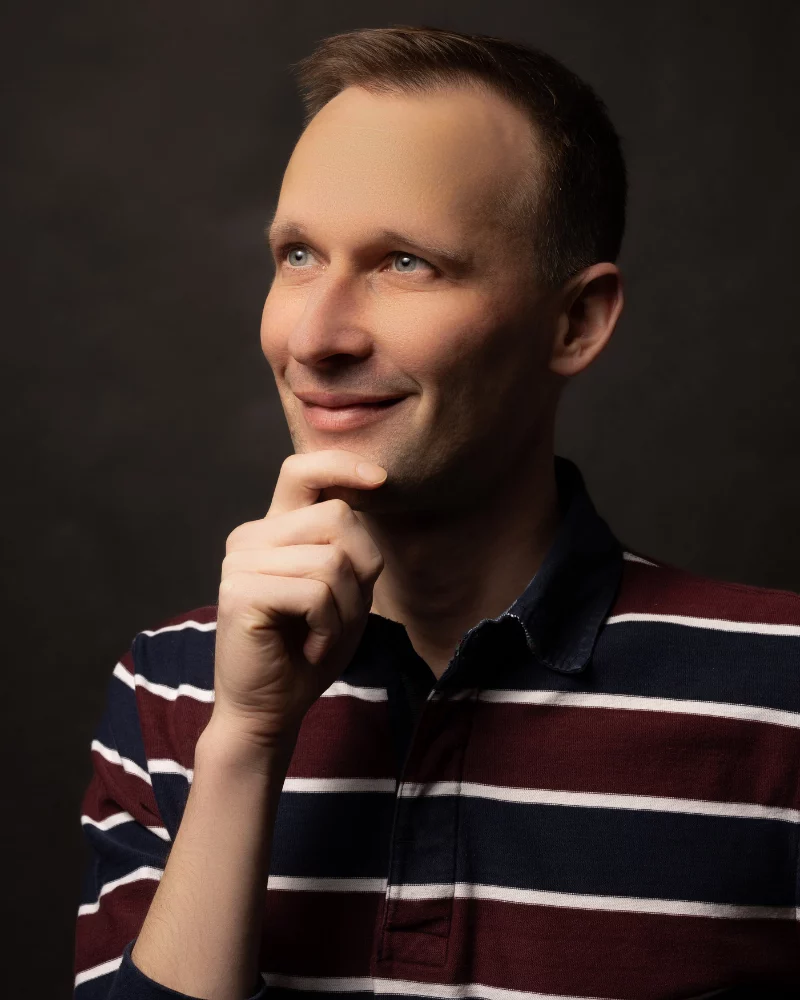
Jakub Orlikowski, PhD Eng.
PhD Eng. Jakub Orlikowski works as a Senior Specialist. His research focuses on the fabrication and modification of innovative materials, particularly polymer composites and nanomaterials designed for a wide range of industrial applications. In his work, he combines the latest scientific advancements with the practical needs of modern industry, effectively addressing rapidly evolving technological challenges.
At the beginning of his career, PhD Eng. Orlikowski gained knowledge and experience in inorganic technology, developing photocatalytic materials used for air and water purification. His work played a key role in advancing technologies that support environmental protection. Collaboration with industry has enabled him to understand the challenges associated with scaling laboratory innovations to industrial applications. This crucial experience has become a solid foundation for his current research projects.
Currently, PhD Eng. Orlikowski is involved in the design of materials tailored to specific industrial needs. Drawing on his expertise in functional biomaterials and polymers, he conducts research projects focused on anti-counterfeiting materials and thermochromic indicators. Using advanced manufacturing methods, such as encapsulation technologies, he develops innovative solutions that meet the growing demand for high-security products – including systems for verifying product authenticity and technologies enabling effective temperature monitoring.
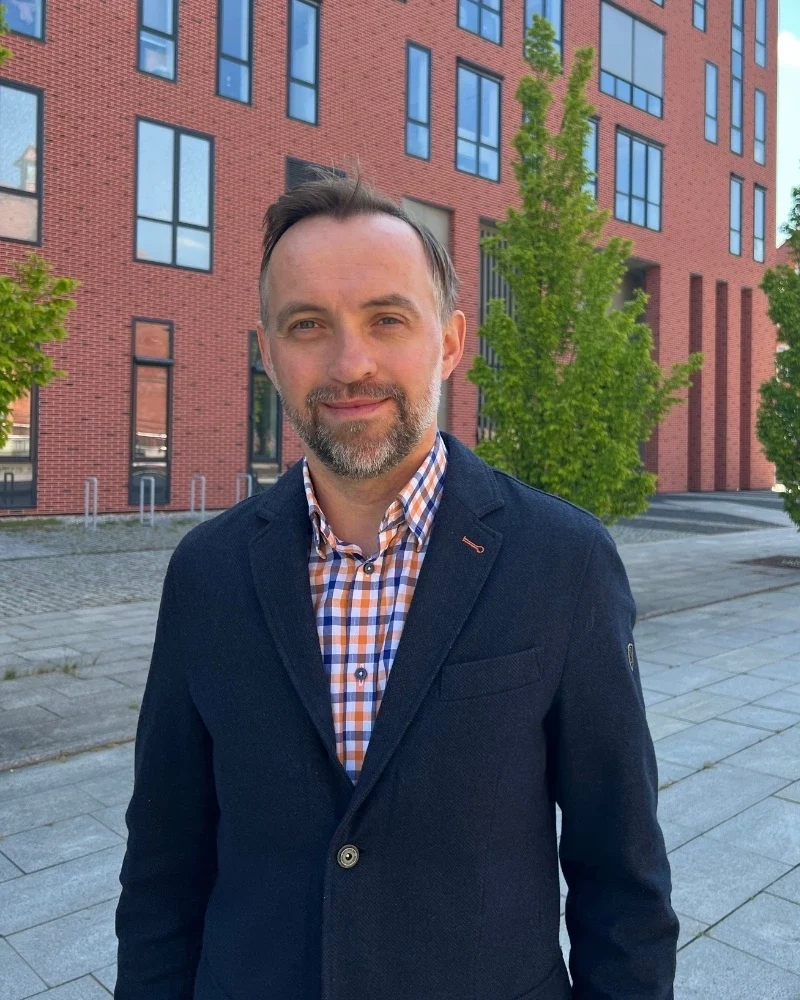
Bartłomiej Potaniec, PhD Eng.
PhD Eng. Bartłomiej Potaniec works as a Senior Specialist. He leads the “SensiMat” project – Dyes in innovative sensory labels for monitoring storage conditions, implemented under the “Science for Society II” program of the Polish Ministry of Science and Higher Education. His research focuses on the synthesis and modification of chemical compound structures to obtain derivatives with specific, desirable properties for use in modern industrial materials.
At the beginning of his career, PhD Eng. Potaniec gained experience in the isolation of biologically active substances from plants and the synthesis of compounds from the flavonoid and chalcone groups with antioxidant, anticancer, and antimicrobial properties. During the LASERMARK project (in cooperation with PWPW, financed by NCBiR) and the HYPHa project (financed by FNP), he acquired practical knowledge of modern dye synthesis methods and their physical properties, such as thermal stability or spectral characteristics.Within the NCBR “Indicat” project, he designed and synthesized compounds with thermochromic properties. Additionally, PhD Eng. Potaniec has broad experience in characterizing derivatives of organic materials using various methods, enabling comprehensive analysis of their structure, physicochemical properties, and potential applications.
Currently, as part of the “SensiMat” project, PhD Eng. Potaniec designs thermochromic compounds for use in printing inks, providing labels with the ability to change color depending on temperature, humidity, or storage time. His research focuses on the synthesis of organic dyes for use in sensory labels designed to monitor storage conditions. The “SensiMat” project aims to develop new, human-safe thermochromic dyes and incorporate them into smart labels that visibly change color once a specific temperature, humidity, or storage duration is exceeded.

Franz Steppeler, PhD
PhD Franz Steppeler works as a Senior Specialist. He is involved in the “SensiMat” project – Dyes in innovative sensory labels for monitoring storage conditions. His research focuses on the development and analysis of synthesis pathways for compounds intended for specialized applications and their processing into smart materials.
At the beginning of his career, Dr Steppeler gained experience in material synthesis during his undergraduate studies at Friedrich Schiller University in Jena, Germany, and later during his master’s and doctoral studies at Wrocław University of Science and Technology. He has further developed his research interests through participation in three research projects funded by NCN, NCBR, and the Ministry of Education and Science.
Currently, Dr Steppeler focuses on the development of colorimetric sensory systems designed to monitor storage and transport conditions of sensitive products, such as temperature, humidity, and storage time. His research places particular emphasis on the design and modification of non-toxic organic dyes as alternatives to toxic heavy metal salts. The resulting compounds are processed into smart materials that enable the creation of precise, affordable, and accessible monitoring systems.

Katarzyna Wal
MSc Eng. Katarzyna Wal works as a Specialist and is currently pursuing an industrial PhD in collaboration with the Doctoral School of Wrocław University of Science and Technology. Her research focuses on the modification of layered minerals to obtain porous materials with adsorptive properties, designed for the removal of volatile organic compounds (VOCs) from the gas phase.
At the beginning of her career, MSc Eng. Wal gained experience in studying photopolymerization processes of cationic and free-radical systems, as well as in the design of multicomponent systems initiating photopolymerization, which she conducted within research projects funded by NCN and NCBiR.
During the LASERMARK project, she was involved in the synthesis of polymers from the polyurethane, polyester, poly(ethylene glycol), and polyacrylate groups. She also has extensive experience in industrial cooperation, having worked on projects involving synthetic rubbers and anionic polymerization. In her work, she operates control and measurement equipment used for analyzing material porosity and sorption properties.
Currently, MSc Eng. Wal is conducting industrial PhD research on gas-phase contaminant adsorption. Her work focuses on developing vermiculite-based adsorbents with potential antibacterial applications as air filter inserts characterized by enhanced adsorption properties toward volatile organic compounds.

Kacper Albin Prokop
MSc Kacper Prokop works as a Junior Specialist and is currently pursuing an industrial PhD at the Doctoral School in cooperation with the Faculty of Chemistry at the University of Wrocław. His research focuses on the development of new transparent ceramic sinters and nano- and microscale powder materials doped with rare earth ions, intended for use in modern optical technologies. His work involves the synthesis of inorganic materials and their physicochemical characterization.
At the beginning of his career, MSc Prokop gained experience through interdisciplinary research projects, which included graphene materials, organic dyes, metal oxide clusters, and photonic platforms. He has been involved in studies on both the synthesis and structural as well as optical characterization of these materials.
Currently, MSc Prokop focuses on transparent ceramics based on highly symmetric crystalline systems. His main research interests include phosphors based on eulytite- and apatite-type structures and tungstates with double perovskite structures doped with Nd³⁺, Eu³⁺, and Yb³⁺ ions. He also collaborates with Institut Lumière Matière and CERA MATEIS-INSA Lyon at Claude Bernard University Lyon 1, where he undertakes research internships and develops expertise in luminescence studies and ceramic sintering technologies.

Jakub Pawłów
MSc Jakub Pawłów works as a Junior Specialist and is currently pursuing an industrial PhD in collaboration with the Doctoral School of the University of Wrocław. His research focuses on the design and synthesis of hybrid luminescent and thermochromic materials, doped with lanthanide ions and organic dyes, intended for applications in optical temperature sensors.
At the beginning of his career, MSc Pawłów gained experience in the synthesis and spectroscopic analysis of nano- and micropowders, such as YPO₄:Nd³⁺, as well as in studies involving graphene and molecular clusters. His scientific interests also include the synthesis and characterization of inorganic luminescent materials activated with rare earth elements, along with structural and spectroscopic analysis and research on thermochromic materials using organic dyes and ionic crystals. He has acquired valuable expertise through participation in six research projects funded by NCN, NCBiR, and FNP, and during research internships at the Institut Lumière Matière (ILM), Claude Bernard University Lyon 1 in France.
Currently, MSc Pawłów is conducting his industrial PhD research on hybrid materials for optical temperature sensors. His goal is to develop sensors capable of detecting temperature changes through both emission spectra variations and visible color shifts. The designed sensors, which change color from pink to white at around 105°C, have potential applications in monitoring industrial processes requiring precise temperature control, such as in the food, pharmaceutical, and chemical industries.

Weronika Zając
MSc Weronika Zając works as a Junior Specialist and is currently pursuing an industrial PhD in collaboration with the Doctoral School of the University of Wrocław. Her research focuses on the synthesis and characterization of photonic crystals and luminescent dyes.
At the beginning of her career, MSc Zając gained valuable experience during her studies at the University of Wrocław and through an internship at Łukasiewicz – PORT. She has participated in three research projects funded by NCN and NCBiR, and has presented her research results multiple times at international scientific conferences, both in the form of posters and oral presentations.
Currently, MSc Zając is conducting her industrial PhD research on the synthesis of modified three-dimensional photonic crystals, whose properties change in response to the presence of specific analytes. This research has significant practical applications, particularly in pollution detection, which plays a key role in protecting human health and the environment. Her work includes the synthesis and characterization of both inorganic and organic spheres, as well as the study of their structural and optical properties. Additionally, her scientific interests extend to the field of biosensors.